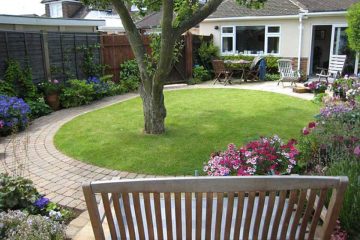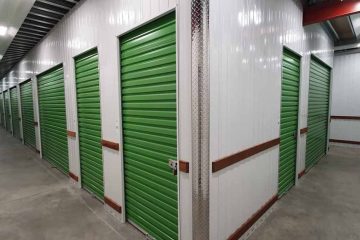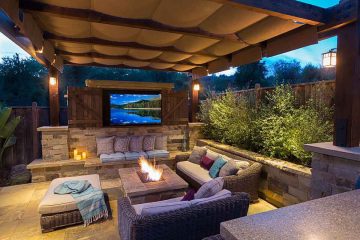For most landscaping projects, whether they be a large project or a small one, the use of grass in some capacity is almost certainly going to be included. However, there may be some circumstances where using grass is not possible or advisable and alternatives need to be considered.
Apart from the person who owns the garden deciding that they do not want grass, the main reason for having to look at alternatives is that the grass simply cannot grow properly. This is best discussed with your landscape designer, landscaping company or horticulturist that you are using to advise you. The main cause of this can normally be attributed to the lack of one of three things which grass needs to grow and to thrive, which are water, nutrients, and sunshine.
This means that in locations that have low levels of rainfall, soil that is dry and lifeless, or where the sunlight is blocked, perhaps from tall buildings, then the grass is at best going to less than healthy, and in the worst cases, not grow at all. This brings us to the alternatives which are available to you, and in most scenarios one of these three choices is the one that the majority of landscape gardeners opt for.
Patio / Decking
Ok, so maybe two alternatives in one, but in effect what you doing here is building a surface or platform where the natural grass would have been. There are several materials that can be used with patios able to be built from gravel, concrete, bricks, limestone blocks or wood. Decking panels can also made from wood, but the most durable and easy to maintain is decking where the panels are made from man-made composite material.
Decks and patios are great for entertaining guests – having a barbecue, a nice shade sail from oneshade.com.au, and relaxing outdoor furniture are easy people pleasers, and the other advantages that they have are that, in the main, they require a lot less maintenance than grass, and they should last for many years.
Artificial Grass
The most obvious choice if it is not possible for grass to grow in your landscape garden is to use artificial grass instead. Now, the purists amongst you might consider artificial grass as some form of cheating. It is not, unless someone plans to tell everyone it is real grass, but if you are still unwilling to consider this option, then we have two more you.
For the others, who are perfectly happy to use artificial grass, there may still be some concerns that it is going to look fake. That may have been a justified doubt 20 or so years ago, however, advances in how artificial grass is manufactured means that it looks and feels closer to the real thing than it ever has.
You have two main options for artificial grass, with the first being nylon, which is extremely hard wearing and ideal if the area you going to be using it has withstand lots of activity. The second material is polyethylene which is soft, durable, and has vibrant green colouring.
Alternative Plants
If your garden is not suitable for growing grass, it does mean that it is not suitable for other plants. By doing some research into which plants are suited to the conditions you have in your garden, you should be able to select several which will thrive there.
You could create some flower beds, a shrubbery, or a vegetable garden, for example. Each of these will require different types of, and amounts of, care and maintenance and whilst you may be disappointed that you could not have a natural grass lawn, at least this option allows you to pursue your passion for gardening.


